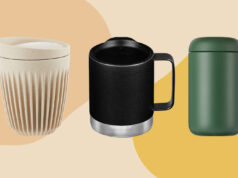
When writing final and graduate theses, as well as all other forms of professional and final theses, it is necessary to correctly cite and reference the literature used. When referencing, standardized styles are used to mark the sources of information used in the work. About a hundred referencing styles have been developed, and one of the most popular is the APA style. The APA style of citation implies citation in the text and a list of references – for each citation in the text, a reference must be given in the list of references and vice versa. With this style of citation, the source we use is indicated within the text, so that the elements (author, year of publication, page number on which the part we are quoting is located) are listed in parentheses and separated by a comma. Cited sources are listed at the end of the sentence immediately before the full stop. The reference page contains full information on the sources used in the text.
Guidelines for Proper Citation Format

Citing literature is mentioning the sources from which we take data for our seminar, final, or any scientific work. You can cite a dissertation in two main types of literature citations, namely the citation of literature at the end of the paper and the citation of literature in the paper (directly and indirectly quoting (or paraphrasing)).
In the citation, there are some rules that must be followed in order to obtain the required form. One of the most important things when writing a text is that it is grammatically correct and understandable for the reader. Therefore, it is very important that you pay attention to the three starting priorities, which are the writing style, the substance, and the arrangement of the text.
The Essence of Effective Writing
When we talk about the style of writing, it is up to you to choose whether it is literary or scientific research. What appears to be the biggest difference between these two styles of writing is that in literary work many stylistic figures and a wide range of words are used, while in scientific and research work facts are stated.
The essence of the text is what you should pay the most attention to because researchers sometimes write already known things or explain insignificant findings, which certainly affects the quality of the writing. When we talk about APA format, it requires consistency between style elements, such as font, line spacing, margins, and page headers. Paragraph text uses Times New Roman or other serif fonts, while image titles use sans serif fonts, such as Arial. The first line of each paragraph is separated by five spaces.
The Role of Quotes in Text
There are some differences in citing depending on number of authors. In case it has only one, the last name of the author and the year of publication has to be indicated in parentheses, separated by a comma. When a work has no author, the title of the work is given and sorted in the list or bibliography by the first word in the title. In case it has two authors, both authors are cited every time the reference appears in the text. The character & is inserted between the author’s last name. When we have several authors, we list them all, adding an ampersand (&) before the last surname. If we have more than seven authors, we list the first six, then write three dots, and finally the last author.
Quoting the author increases the quality of the work because citations make it more convincing, and in this way, we show the reader that people more expert than us came to these conclusions. In this way, we also show our knowledge, because we automatically let it be known that we have read the necessary professional literature in order to write this paper. And the text will be more interesting because the quotes break the monotony of the text.
Presenting in Essay Form

There are also situations when citing online sources. In that case, it is necessary to enter the DOI number (digital identifier of the object), which is entered at the end of the description without a period at the end. If you do not see the DOI number, enter the URL, but you should not enter the date of access to the site, except for sites that will most likely change over time (such as Wikipedia).
Whatever style you use, it is very important that the work is divided into several main parts, namely the introduction, methodology, conclusion, and literature. The introductory part contains a comprehensive description of the problem and indicated ways of solving the problem. Condemnation and the presentation of these are avoided, and they are written in the form of essays. In principle, the introduction should be made up of generally known facts that describe the problem and indicate the direction of the research.
In the research methodology, it is necessary to briefly describe the problem (within one paragraph). The paragraph usually ends with the sentence: “On the basis of the observed problem, the following hypothesis is defined: ” Accordingly, the following paragraph is a hypothesis. Methods should be enumerated (without using ordinal numbers) and arranged from more significant to less significant methods with regard to the research process.
Conclusion
After listing the methods used, it is necessary to refer to the available data sources (primary and secondary), and the limitations regarding the collection, processing and presentation of data (e.g. part of the data may be a business secret or the available data may be synthesized, and the research results are derived from approximation, etc.). We come to the conclusion, the part in which we briefly review the entire work. At the end of the conclusion, it is useful to devote to the possibilities of further research of the problem the author dealt with, either horizontally, expanding the problem or vertically deepening the problem, and to direct future authors to unexplored parts of the problem, thus opening up the possibility for further research.









